Hello, I’m Alice and I’m a 24 year old Art and Heritage lover! As a recent Graduate from the University of Bristol in the History of Art my blog mainly focuses on my research interests – Modern American industrial architecture and visual culture. However, this blog is as eclectic as my own fascinations, so you’ll find a wide variety of historical, artistic and cultural posts, ranging from Ancient Egypt, to 19th Century Quaker Design. Occasionally I also post about recent exhibitions or talks I have attended to keep you informed on my latest endeavors. If you have any questions or suggestions then please feel free to drop me an ‘ask.’ Enjoy!
Don't wanna be here? Send us removal request.
Photo









Alexandra Road Estate by Neave Brown, Camden, London, 1968. An example of Brutalism in architecture.
4K notes
·
View notes
Photo

Relief of Sobek and Haroeris in Kom Ombo
A detail of a bas relief depicts the crocodile-headed god Sobek and the falcon-headed god Haroeris (“Horus the Elder”) which dates to the Ptolemaic Period, ca. 305-30 BC. The Double Temple of Sobek and Haroeris, Kom Ombo.
2K notes
·
View notes
Photo

‘Tin Tabernacles’
19th Century corrugated iron chapels and churches, perhaps more commonly known as ‘Tin Tabernacles,’ have often been viewed with contempt throughout their history. Described by William Morris in his 1890 SPAB technical pamphlet as ‘spreading like pestilence over the country,’ it is no surprise that very little research has been done into these abundant structures.
The earliest structures were ‘emigrant cottages,’ consisting of a wooden frame with corrugated cladding, produced by E. T. Bellhouse, and shipped to California during the Gold Rush of 1849.5 Bellhouse’s most famous iron building is perhaps his 1852 ballroom for Prince Albert at Balmoral, and he would later become a key producer of corrugated iron chapels.
The chapels became popular in the 1860s, especially amongst the non-conformists, who saw a surge in congregation numbers in the 19th Century. They were ordered flat pack from a variety of manufacturers catalogues and were usually erected by the congregation.
Keep your eyes peeled on your walks as these unassuming structures often go unnoticed.
#tin tabernacle#corrugated iron#nonconformist#chapel#church#victorian#victorian architecture#architecture
8 notes
·
View notes
Photo
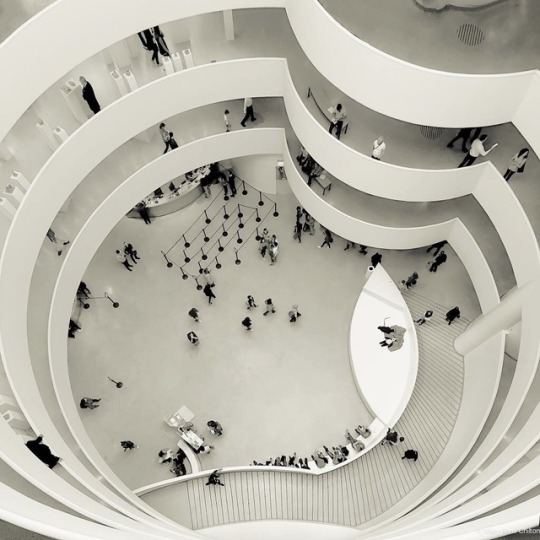
Top of the Guggenheim Museum © Mary Anne Chilton
458 notes
·
View notes
Photo

FRANK LLOYD WRIGHT, Marin County Civic Center, San Rafael California, 1962
615 notes
·
View notes
Photo

Ford Plant, River Rouge, Blast Furnace and Dust Catcher, Photo by Charles Sheeler, 1927
321 notes
·
View notes
Photo





Temple of Delian Apollo (”The Portara”, the lintel)
Peninsula of Palatia, Naxos, Cyclades, Greece
6th Century BCE
Ionic peripteral
On the small peninsula of Palatia, north of Naxos Town, a sanctuary developed, probably from Protogeometric times. The main period of floruit was in Archaic times under the reign of the tyrant Lygdamis (third quarter of the 6th century). The location of the sanctuary is coastal and can also be considered as urban. The divinity worshiped was most probably Apollo Delios.
The Ionic temple is oriented West. Built of marble, it is divided into a pronaos, cella and opisthodomos. The cella is divided into three naves by a double row of four columns. The temple must have been surrounded by a pteron (6x12), doubled on the small sides (overall dimensions 59m x 20m). The threshold level of the monumental entrance is 1,10m. higher than that of the cella. The difference between this level and the cella, could be associated with a detail of the worship, a ceremony intended to be seen by all. The temple was never completed, its construction was halted immediately after the end of the tyranny of Lygdamis, in 524 BCE The huge main doorway with its monumental jambs is the only elevation preserved today: it consists of four monolithic elements and its dimensions are 3,6m. wide and 5,96m. high.
3K notes
·
View notes
Photo
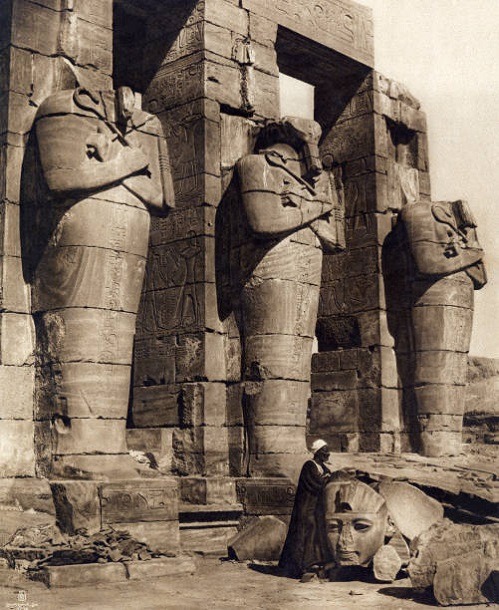
Entrance to the Ramesseum
A gravure of the Osiride statues at the entrance to the Ramesseum, The Mortuary Temple of Ramesses II, West Thebes, Egypt, c.1905
723 notes
·
View notes
Photo

COUVENT SAINTE-MARIE DE LA TOURETTE, LE CORBUSIER, JULY 2017
67 notes
·
View notes
Photo

The Pyramid Of The Magician, Uxmal, Mexico
258 notes
·
View notes
Photo
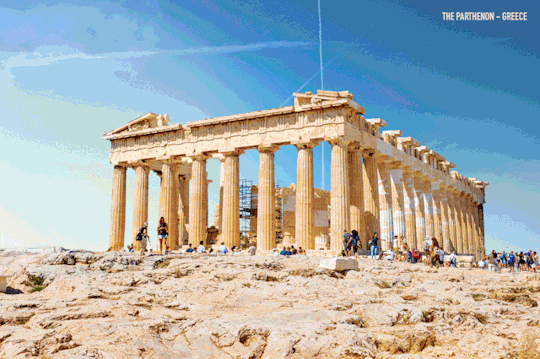

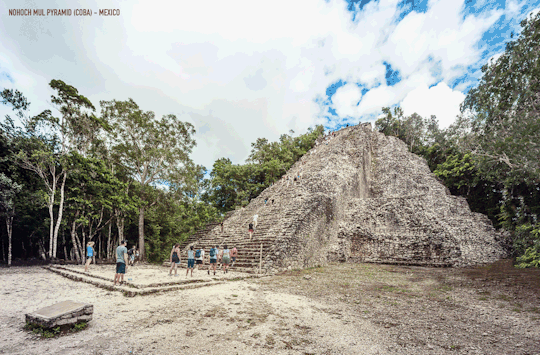
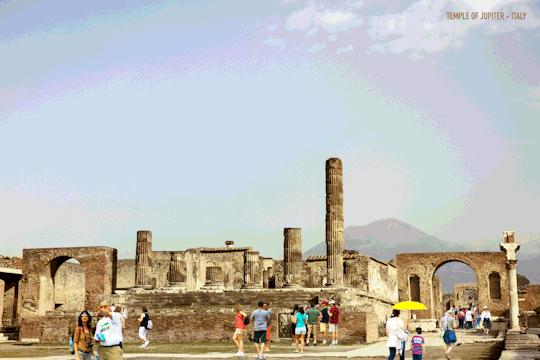


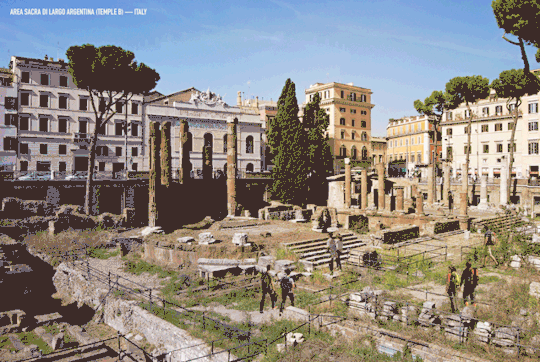
Ancient ruins give us a fascinating window into the past..
Ancient ruins give us a fascinating window into the past: how people lived, the spaces they inhabited and their daily lives. Historians, architects and travellers alike marvel at these remnants of time past, but it’s often hard to get a sense of what these spectacular buildings would have looked like at their peak. We decided to step back in time and recreate some of our favorite ancient ruins in their original locations.
Identified from the top:
The Parthenon Athens, Greece / 432 BC
Luxor Temple Luxor, Egypt / 1380 BC
Nohoch Mul Pyramid (Coba) Quintana Roo, Mexico / 100 BC-100 AD
Temple of Jupiter Pompeii, Italy / 200 BC
Milecastle 39 (Part of Hadrian’s Wall) Northumberland, England / 100 AD
The Pyramid of the Sun, Teotihuacán Teotihuacan, Mexico / 200 CE
Area Sacra di Largo Argentina—Temple B Rome, Italy / 101 BC
58K notes
·
View notes
Photo


Personal account of being enslaved by Ottobah Cugoano ‘Thoughts and sentiments on the evil and wicked traffic of the slavery and of the commerce of the human species’ (1787):
“Many of my miserable countrymen chained two and two, some hand-cuffed, and some with their hands tied behind … I was soon conducted to a prison, for three days, where I heard the groans and cries of many … When a vessel arrived to conduct us away to the ship, it was a most horrible scene; there was nothing to be heard but the rattling of chains, smacking of whips, and the groans and cries of our fellow-men. Some would not stir from the ground, when they were lashed and beat in the most horrible manner … When we were put into the ship, we saw several black merchants coming on board, but we were all drove into our holes and not suffered to speak to any of them. In this situation we continued several days in sight of our native land”
He arrived in the Caribbean after this arduous journey and was set to work in Grenada until he was purchased by and Englishman, taken to England in 1772, and later obtained his freedom.
#ottobah cugoano#slave trade#Bristol#Slavery#Slave ships#slave accounts#slavery history#slave auction#history#historical
109 notes
·
View notes
Photo

Church of Holy Sepulchre, Jerusalem
A 9th century copy based on description of Frankish bishop Arculf who toured Levand during the late 7th century
114 notes
·
View notes







